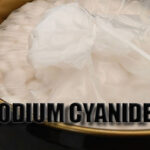
Arsenic-bearing gold ores are typically classified as refractory ores, posing significant challenges in gold extraction. This is a global issue due to the complex mineral composition of these ores.
Key arsenic minerals include:
-Arsenopyrite
-Orpiment
-Realgar
Among these, “arsenopyrite” is the most common and often contains finely dispersed gold particles encapsulated within or between its crystals. Even with ultrafine grinding, complete dissociation of gold can be difficult. Moreover, when gold coexists with arsenopyrite, a dark surface film may form on the gold, further hindering recovery.
As a result, effective “pretreatment” of arsenic-bearing gold ores is essential to improve gold recovery during subsequent leaching processes.

Solution: Pretreatment Methods
- Roasting Oxidation Pretreatment
Roasting is a traditional and widely used method for treating sulfide ores. Its objectives include:
- Decomposing sulfide minerals to expose gold particles.
- Volatilizing arsenic and antimony sulfides.
- Removing or deactivating carbonaceous matter.
Key factors influencing the roasting process: - Temperature
- Particle size and porosity
- Chemical composition
- Airflow and oxygen concentration
- Wet Chemical Pretreatment
Several chemical approaches can oxidize and break down sulfide minerals:
2.1 Atmospheric Pressure Alkaline Leaching
- Uses alkaline reagents under normal pressure.
- Oxidizes arsenic and sulfur-bearing compounds.
2.2 Atmospheric Acid Leaching
- Employs acids (e.g., peroxymonosulfuric acid) to oxidize the ore under atmospheric pressure.
2.3 Wet Chlorination
- Uses reagents such as hypochlorite, ferric chloride, or copper salts (not chlorine gas).
- Effective for carbonaceous gold ores.
2.4 Nitric Acid (HNO₃) Decomposition
- Strongly oxidizes arsenopyrite.
- Enhances gold exposure and recovery.
2.5 Hot-Press Chemical Pretreatment
- High-pressure oxygen leaching in acidic or alkaline media.
- Improves gold recovery and reduces cyanide consumption.
- Bacterial Oxidation Pretreatment
Biological methods use bacteria (e.g., Thiobacillus ferrooxidans) to catalyze the oxidation of sulfide minerals.
- Mimics the effects of pressure oxidation.
- Accelerates mineral breakdown significantly.
- Oxidation of arsenopyrite can reach 80–90% after 60–120 hours.
- Gold leaching rates can increase by 30–50% after bio-oxidation.
- Other Techniques
Other experimental or less common pretreatment methods include:
- Vacuum dearsenication
- Volatile smelting
- Segregation roasting
Conclusion
As the exploitation of complex gold ores increases, pretreatment technologies for high-arsenic content ores are becoming increasingly vital. Further research and development are required to adapt these methods to the diverse characteristics of refractory gold resources.




